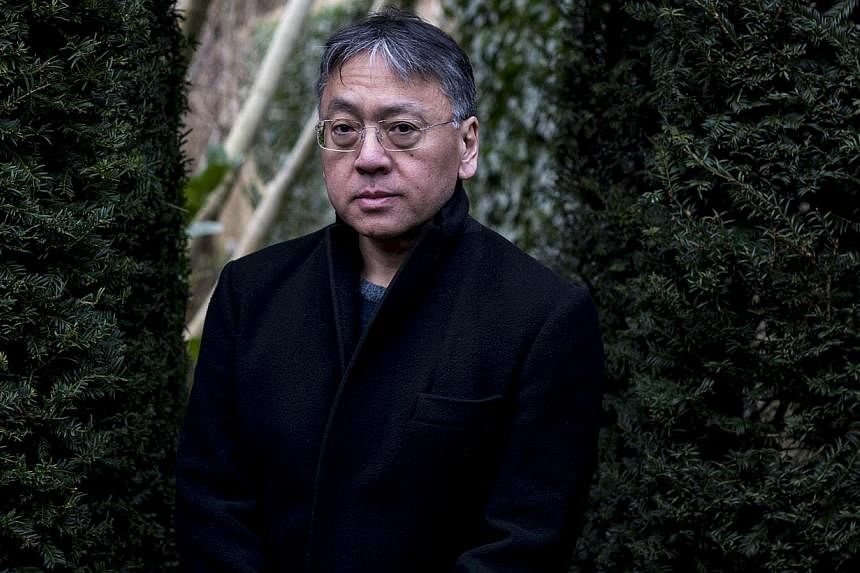Kazuo Ishiguro's first novel in 10 years is a dreamy, unforgettable fantasy about the need to face the past and also to forget it for the sake of peace.
The unsubtly titled The Buried Giant - the title refers to suppressed secrets - begins with an old married couple, Axl and Beatrice, setting out on a long-deferred journey to their son's village. Neither remembers why they delayed this visit for so long. Forgetfulness is part of life in their community where amnesia allows even the most anxious of parents to be soon distracted from a missing child.
The journey of Axl and Beatrice slowly reveals different facets of this eerie world which straddles so perfectly the divide between history and fantasy that readers will find it hard to pin this novel down in either genre.
This is a British countryside where ogres shamble out of the mist and set upon travellers, where pixies and dragons are daily dangers for the unwary. This is Britain between legends, after the Romans have given up their conquest and left, after the legendary King Arthur and his knights of the Round Table have passed into history and mumbled myth. Only one knight remains, the youngest, Sir Gawain, grown old before he could slay a fearsome dragon that is still feared by the islanders.
The Buried Giant works perfectly as a sequel to another retelling of the Arthurian legend, The Once And Future King by T.H. White, written just before World War II and published in full afterwards, around 1958. The Once And Future King imagined the prosaic political compromises and bloody military manoeuvres necessary to maintain Arthur's legendary reign of justice, honour and chivalry.
The Buried Giant, set after the toppling of this regime, depicts a wounded and disconnected nation. Britain at this time harbours people of different ethnicities, Saxon and Briton, who can only coexist because they have forgotten the full extent of their old enmity.
As a writer born in Japan, brought up in England in a Japanese-speaking home, Ishiguro is perfectly placed to explore ideas of dual narratives of the same past, with versions of history differentiated by personal or cultural context.
His other favourite themes are unfulfilled dreams and the nature of identity and memory - ideas also explored in this novel and others, from The Remains Of The Day (1989), the story of a perfect English butler, to his last novel, Never Let Me Go (2005), about genetic clones who seek to live their own lives, but are thwarted by greater powers, as well as his most recent work of fiction, the short story collection Nocturnes (2009).
Though in some ways predictable, Ishiguro's poetic, poignant prose makes each of his creations unforgettable.
In The Buried Giant, several factions work to keep the past buried for fear of what might happen in a nation of culturally separate communities if old memories are ever revisited. This deliberate forgetting is a familiar real-world phenomenon, from Japan's tendency to downplay its military expansion in Asia during World War II to the marginalisation of alternative narratives of Singapore's recent history. The phenomenon is such a thorny topic that Ishiguro has said in interviews that he put pixies and ogres into the landscape of the novel to deliberately introduce distance from the real world in readers' minds.
Nevertheless, The Buried Giant is a powerful fable about how people can be united or divided by their memories. The long married Axl and Beatrice often have differing versions of their history together and, it emerges, may have only managed to retain their deep affection for each other because they have forgotten the most painful episodes of their past. Some things are too painful to recollect if one is to salvage a marriage, or even a peaceful coexistence with one's neighbours, in Ishiguro's novel.
Or perhaps this is not entirely true. If hatred cannot exist when the memory of wrongs is forgotten, does that mean love cannot persist in the presence of these memories? At the end of their journey, Axl and Beatrice have relearned much about each other, including forgiveness.
"For I suppose there's some would hear my words and think our love flawed and broken," Axl says. "But God will know the slow tread of an old couple's love for each other, and understand how black shadows make part of its whole."
Perhaps it is better in the end to remember and accept all of one's history than rejoice blindly in only part of it. Time can grant us that grace and maturity.
THE BURIED GIANT
By Kazuo Ishiguro
Faber & Faber/Hardcover/352 pages/$26.95 before GST/Major bookstores/**** 1/2
If you like this, read: The Once And Future King by T.H. White (1987 reprint, Ace, $12.25, Amazon.com). This iconic satire is also a very compassionate take on the legend of King Arthur, from boyhood to the collapse of his kingdom. It was first published in 1958 as a compilation of earlier works including young adult title The Sword In The Stone, which inspired a 1963 Disney cartoon.


